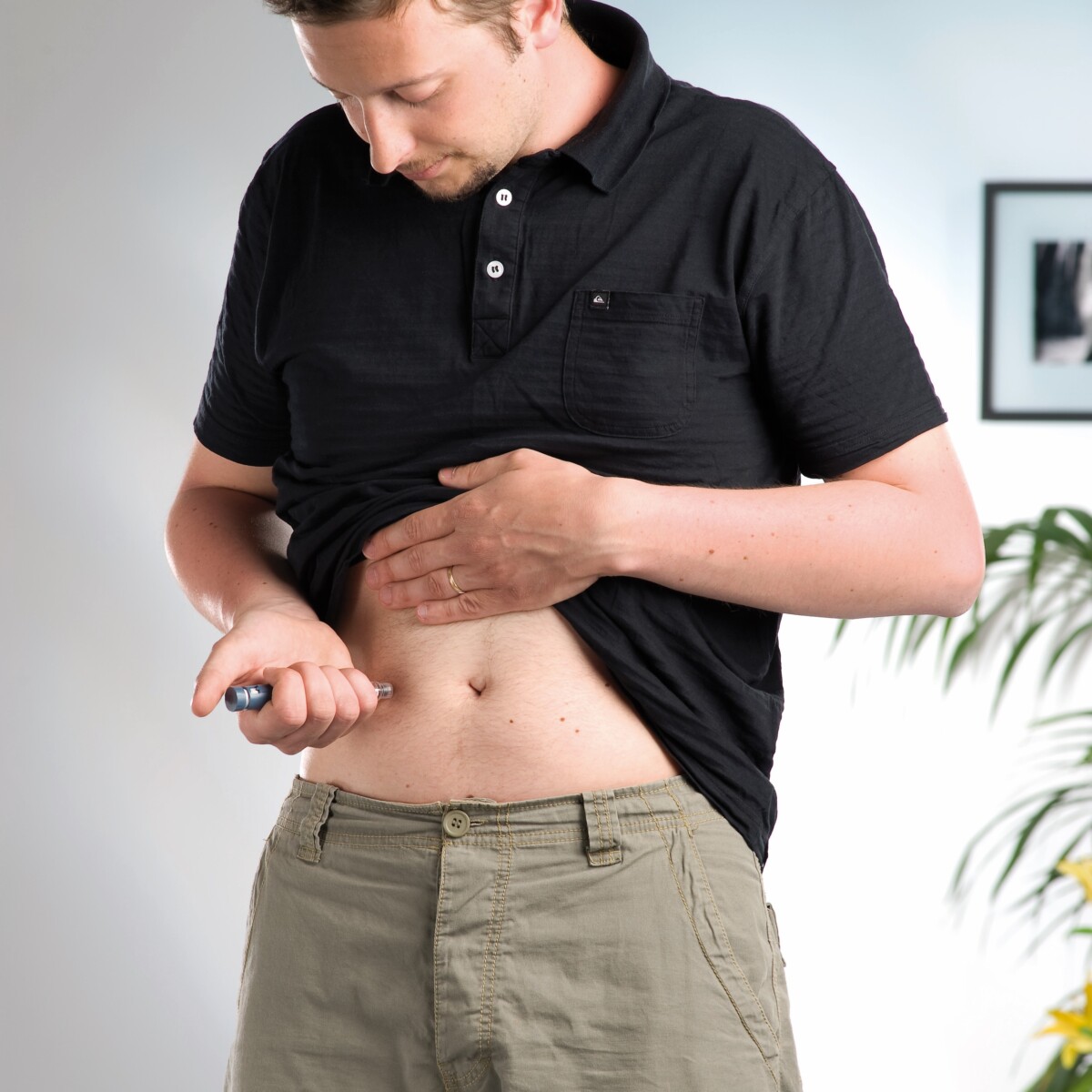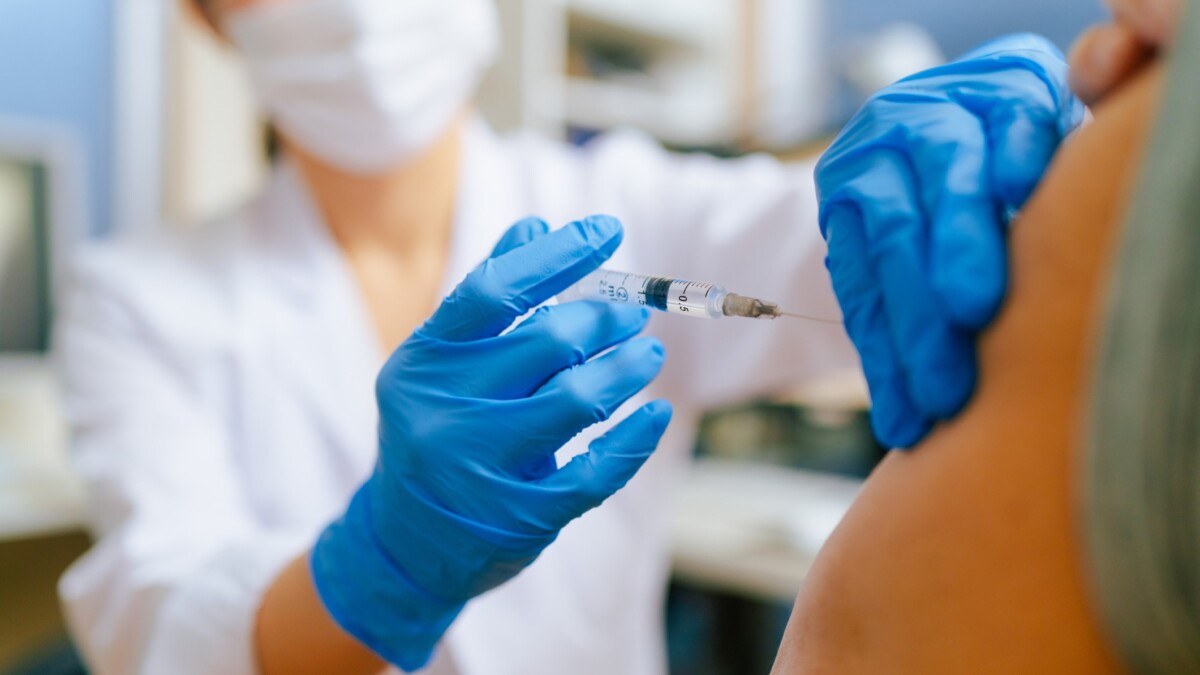According to Diabetes Ontario, approximately 10% of Ontarians are diagnosed with Type 1 or Type 2 diabetes, making it extremely likely that the average pharmacist counsels patients taking injectable forms of diabetes medications, such as insulin or GLP-1 agonists, as a part of their practice.1 An important intervention pharmacists can make in this patient population is a review of proper injection techniques. To illustrate this, consider a survey of 230 Canadian participants which found that all patients involved in the study made at least one injection technique error.2

The top errors according to the survey were:
- Applied injection force (76%)
- Area size of injection site (64%)
- Duration of pen needle in skin (61%)
- Pen needle reuse (39%)
- Performed a skin lift with a 4 or 5-mm needle (38%)
- Used a longer pen needle than required (34%)
- Injected insulin into lipohypertrophic tissue (37%)
Pharmacists play a pivotal role in the management of diabetes, and their expertise is indispensable in guiding patients who rely on injections to manage their diabetes. In this blog post, we will explore essential injection counselling points specifically tailored for pharmacists to provide comprehensive and accurate guidance to patients and resolve common injection technique errors.
The Importance of Site Selection and Rotation
Initial conversations with patients on insulin and other injectable diabetic medications should include a discussion on where to administer the injection and site rotation. Common diabetic medications, such as insulin and GLP-1 agonists must be administered subcutaneously (into fat) rather than intramuscularly. Due to the nature of administration, patients should be advised to administer their injection into the stomach, thighs, and buttocks. However, it is worth noting that the preferred site of injection for insulin in most patients is the abdomen.3 Not only is it a convenient location that allows for ease of self-injection, but the abdomen is also the site where insulin is more consistently absorbed. When administering medication into the abdomen, care should be taken to avoid injecting within 2 to 3 cm of the belly button.3
Patients should also be counselled on site rotation and follow a structured rotation schedule when self-administering injections. Site rotation is essential since frequent injections at the same site can lead to lipohypertrophy, a lump of fatty tissue under the skin that can form when proper injection technique is not followed. Minimizing the risk of lipohypertrophy formation is critical since these masses reduce the predictability of a medication’s absorption. Risk factors for lipohypertrophy include the use of non-purified insulins, repeated injections into a small (less than the size of a postage stamp) area, reusing needles for multiple injections, and failure to inspect the injection sites on a regular basis.4
Best practices for a structured rotation schedule are to use the same general area (such as the abdomen) at the same time of day, but to rotate the administration of the injection within that site. Patients should be instructed to divide the injection site into quadrants or halves and administer daily injections 1 to 2 centimeters (or the width of one finger) apart within that quadrant for one week.5 This helps to ensure a predictable response to the diabetes medication and, therefore, more predictable blood sugar levels. Patients should also be advised to change pen needles after each use and to avoid administering injections at sites with existing lipohypertrophy to ensure predictable and adequate absorption.
Does Needle Size and Base Design Matter?

Pharmacists can help patients select the right needle, ensuring a comfortable and effective injection experience. Helping your patient select the right needle size is also important to reduce the risk of accidentally administering insulin or other diabetes medications intramuscularly.
For most adults using injectable diabetes medications, shorter needles (4 mm to 6mm) are appropriate and should be recommended.5,6 The Forum for Injection Technique (FIT) guidelines recommend injection using these shorter needle lengths to minimize the risk of unintentional intramuscular administration.
When using a 4 mm, 5 mm, or 6mm needle, the average adult patient should administer the injection perpendicularly (at a 90-degree angle) to the skin surface.5,6 For the average patient using shorter needle lengths pinching the skin to create a skin lift is typically not necessary. However, pharmacists should be aware of a few notable exceptions. To prevent intramuscular administration (IM), very lean adults may be required to pinch the skin even when administering injections using shorter needle lengths. If a skin lift is not used, very lean adults using 6 mm needles may be required to administer the injection at a 45-degree angle to ensure subcutaneous administration.
In children and adolescents, insulin pens are typically the preferred injection device of choice due to the shorter needle size used with these products (4, 5 or 6mm). In most children and adolescents, a 4mm needle can be gently administered at a 90-degree angle without a skin lift. Leaner children or adolescents using larger needles (5 mm or 6mm) should administer the injection at a 45-degree angle using a skin lift.5,6
Regardless of age, needle size, or gauge, patients should be trained to let the needle enter the skin gently. Pharmacists should inform patients that excess force is not required when administering the injection and can be potentially dangerous since excess force increases the risk of an IM injection. A good rule of thumb is that if a dent in the skin is formed due to application pressure, then the patient is applying too much force.
Patients who consistently apply too much force may be offered non-posted (contoured) pen needle designs. Contoured needles have the advantage of reducing the impact of unintended application force compared to other options.5 Applying too much injection force can lead to patients injecting into the muscle, which is associated with variable blood sugars7 .
Why is it important for pharmacists to ensure that patients have an adequate supply of pen needles?
When people with diabetes used proper injection technique, including using a new needle for every injection and shifting to a 4 mm or 5 mm needle, A1C was reduced by 1.0% in only 6 months8.. Providing an adequate supply of pen needles can also limit the reuse of pen needles by patients. Pen needle reuse is associated with increased pain and bleeding9, lack of sterility9, and development of Lipohypertrophy, which can lead to erratic insulin absorption, increased glycemic variability and unexpected hypoglycemia5. A best practice on injection technique is to remind patients to use a new needle with every injection and ensure that they have an adequate supply of pen needle.
Pharmacists are armed with the knowledge and training to empower patients with the skills they need to navigate the challenges of injections. Interventions by pharmacy professionals to provide injection training and needle selection can give patients the confidence to reclaim control over their diabetes management. By addressing common injection errors and providing tailored guidance, pharmacists can make a significant difference in the lives of individuals living with diabetes, one injection at a time.
Disclaimer: The content for this article was created by OPA and sponsored by Embecta.
Advertisement
With a 100-year legacy, embecta is committed to advancing diabetes care by helping people with diabetes
develop comfort and confidence in their insulin injections. Learn how embecta supports the community this
World Diabetes Day and beyond.
- Diabetes in Ontario. Available from: https://www.diabetes.ca/advocacy—policies/advocacy-reports/national-and-provincial-backgrounders/diabetes-in-ontario
- Bari B, Corbeil MA, Farooqui H, et al. Insulin Injection Practices in a Population of Canadians with Diabetes: An Observational Study. Diabetes Ther. 2020;11(11):2595-2609. doi:10.1007/s13300-020-00913-y
- Donnor T, Sarkar S. Insulin- Pharmacology, Therapeutic Regimens and Principles of Intensive Insulin Therapy. [Updated 2023 Feb 15]. In: Feingold KR, Anawalt B, Blackman MR, et al., editors. Endotext [Internet]. South Dartmouth (MA): MDText.com, Inc.; 2000-. Available from: https://www.ncbi.nlm.nih.gov/books/NBK278938/
- Xu, Xiao-Han; Carvalho, Vladmir; Wang, Xiao-Hang; Qiu, Shan-Hu; Sun, Zi-Lin. Lipohypertrophy: prevalence, clinical consequence, and pathogenesis. Chinese Medical Journal 134(1):p 47-49, January 5, 2021. | DOI: 10.1097/CM9.0000000000000970
- Berard L, et al. FIT Forum for Injection Technique Canada. Recommendations for Best Practice In Injection Technique. 4th Ed. Available at: com/canada-english/fit-recommendations.
- Hirsch LJ, Strauss KW. The Injection Technique Factor: What You Don’t Know or Teach Can Make a Difference. Clin Diabetes. 2019;37(3):227-233. doi:10.2337/cd18-0076
- Hirsch L, et al. Diabetes Technol Ther. 2014;16(12):867-873.
- Misnikova IV, et al. Diabetes Ther. 2017;8(6):1309-1318.
- Frid AH, et al. Mayo Clin Proc. 2016;91(9):1231-1255.


